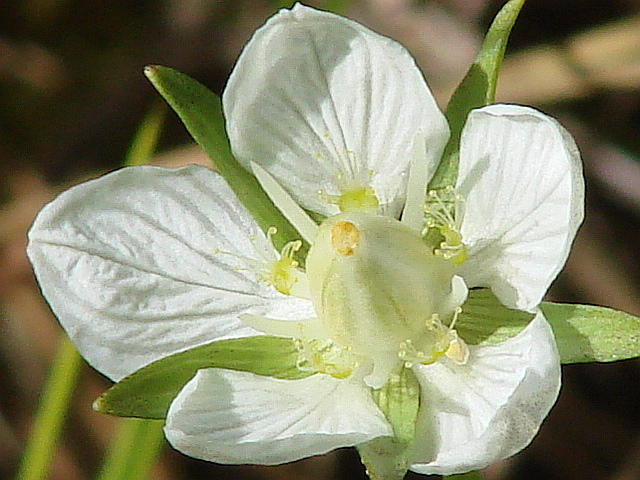Parnassia caroliniana
Parnassia palustris
Grass-of-Parnassus, northern grass-of-parnassus
Leaves basal, the petioles 1.5-4 times as long as the blades;
leaf blades deltoid-ovate to elliptic-ovate, 10-20 mm. long, abruptly tapered, usually truncate.
Flowers single and terminal on long, erect peduncles;
calyx attached to the ovary for 2-3 mm., the 5 lobes lanceolate, entire, 5-8 mm. long, 5-9 veined;
petals 5, white, ovate to elliptic-ovate, 7-12 mm. long, not clawed; scale-like projection at base of petal flared into a broadened upper portion divided into 7-11 slender segments;
filaments broad, longer or shorter than the 2-3 mm. long anthers.
Capsule ovoid, 10-12 mm. long.
Parnassia caroliniana
Parnassia palustris
Occurring on both sides of the Casades crest in Washington; Alaska to California, east to the northern Great Plains, Great Lakes region, and northeastern North America.
- Local floras:
BC,
CA,
OR,
WA
- Local Web sites:
CalFlora,
CalPhotos,
Flora NW,
PNW Herbaria
WildflowerSearch
iNaturalist (observations)
USDA Plants Database
- LBJ Wildflower Center
- SEINet
- Plants of the World Online
- Encyclopedia of Life
- Wikipedia
- Google Image Search


